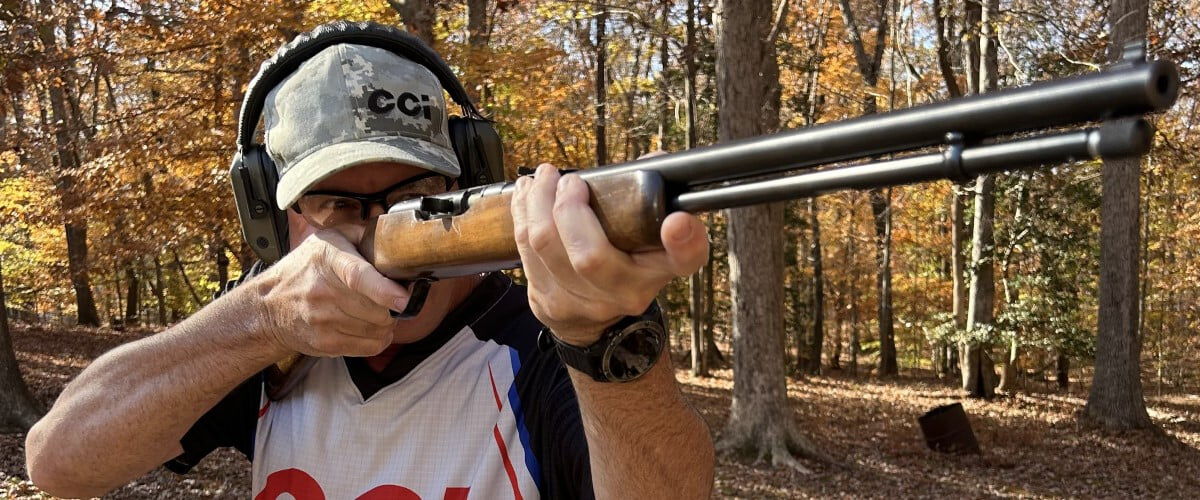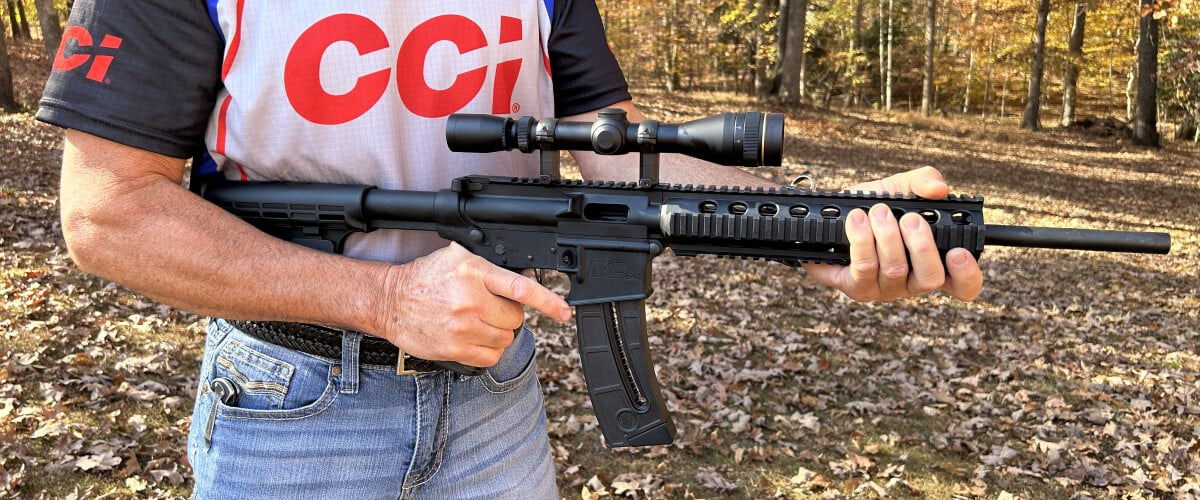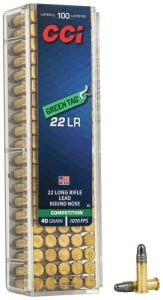
When a rimfire rifle fits you well, mounting the gun, aiming and shooting might seem fairly intuitive. But when attempting precision shots, several nuances can affect performance. CCI ambassador Todd Jarrett, winner of several world Steel Challenge aggregate championships, says professional shooters pay special attention to rifle grip and stance. Following their lead can help improve your shooting.
“It’s extremely important,” he says. “Proper form makes a world of difference, whether hunting or in competition.”
Stance Starters
Jarrett says proper grip begins with the support (non-trigger) hand. In the 1990s and early 2000s, competition shooters started using rifles with longer handguards, whether on standard long guns or modern sporting rifles, and perfected a technique with a longer offhand extension. Basically, you extend your support hand out so it’s in a locked position, grab the handguard and pull it back into your shoulder, locking it in.
“So, for long precision shots, that longer extension allows us to have a more stable platform with the support hand,” he says.
Next, focus on a firm hand grip and points of contact.

“You want to start by gripping the forearm with your support hand and maintaining a very strong grip on it,” Jarrett says. “You also want to maintain a strong grip with your shooting hand and hold on extremely tight with that. Then you want to pull that gun back into your shoulder with a good, firm grip. Our fourth point of contact is our cheek or jawbone sitting on the stock, which will help stabilize the stock and give you a good frame of reference for mounting purposes.”
Then, focus on stance, which gets your body in good position for the shot.
“With a rifle, I like to have my hips pointing roughly around the 2 o’clock position, for right-handers,” Jarrett says. “I want to transfer my weight to have about 70 percent of my weight on my weak-side leg and only 30 percent on my right leg, as a right-handed shooter. Lefties, of course, can reverse this.”
Weighty Matters
That weight transfer is extremely important for getting your sights back on target during follow-up shots,” Jarrett says.
“If you have more weight transferred on the back of your right foot, you’re going to have more recoil and your sight picture will be off the target longer,” he says. “If you transfer that weight to your weak-side leg, the sights will return to the target faster for quicker acquisition.”
Some competition or hunting situations might force shooters to adapt a bit. However, Jarrett says fundamentals still hold true.
Green Tag
When a competition is on the line, settle for nothing less than the ultimate rimfire accuracy. Green Tag is suitable for both rifles and pistols, and is designed exclusively for competition.
Buy Now
“There are techniques in competition where we might have to square up so our hips and shoulders are square to the target,” he says. “There are also techniques where they will force you with your hips at the 3 o’clock to maintain good control of the rifle. There’s where your stable base of maintaining 70 percent of your weight transfer on top of your toes on your weak-side leg pays off.”
Of course, mastering proper grip and stance requires practice and repetition. But that’s no different than any other aspect of rifle shooting, and Jarrett says consistent reps with those best practices will soon make good grip and stance part of your natural shooting routine.